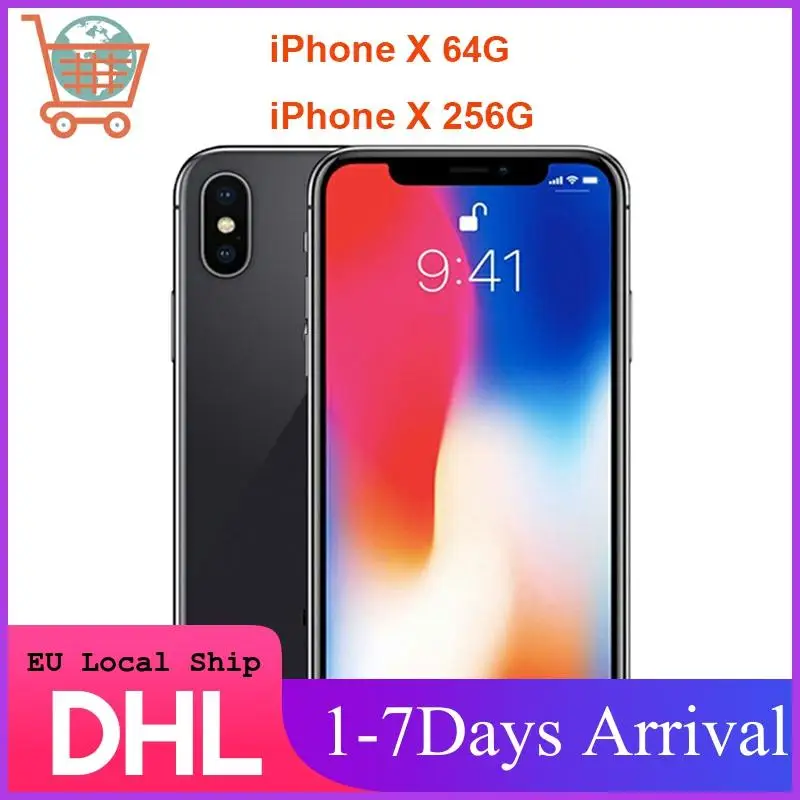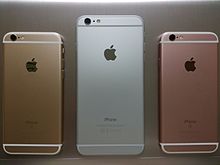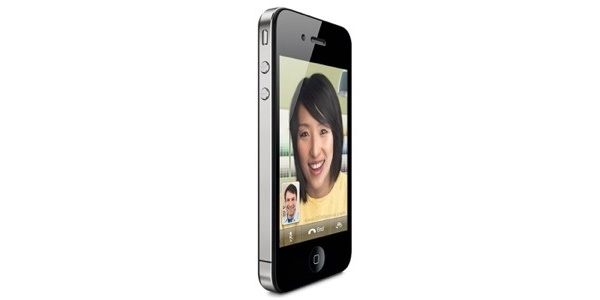- Places To Get Iphone Unlocked
- How To Use Unlocked Phone
- How To Use Unlocked Iphone In Europe Plus
- How To Use Unlocked Iphone In Europe
- How To Use Unlocked Iphone In Europe Sim Card
- Das iPhone in Deutschland: Buying an iPhone for Germany Also see our iPhone FAQ below. If you already own a recent iPhone model, then see Part 2: Using an iPhone in Germany. You have two basic choices when it comes to acquiring a new iPhone: 1. Buy the phone outright and unlocked from Apple or a carrier. Lease the phone monthly from Apple.
- Once unlocked, you should be able to use it pretty much anywhere that has a GSM network. You won't be able to use it on carriers that use CDMA networks as that's a different type of wireless radio entirely. CDMA doesn't use SIM cards, so that's an easy way to tell them apart. One other thing you should keep in mind is that iPhone 4 uses a micro.
- An iphone 5 unlocked phone is model A 1428 and you can buy and use with AT&T. The iphone 5 that you get with Verizon or Sprint is model A1429. You can use the Verizon model internationally but you have to use their global plan.
- While iPhone users in the U.S. May still be tied to AT&T for their cellular service, Apple will sell the iPhone 3GS and iPhone 4 unlocked and SIM-free in several countries, including Canada.
Here's a guide on what you need to do to travel with your iPhone to Europe — followed by some applications that should be helpful for your trip. Jailbreak and unlock your iPhone.
The ease of using an international SIM card on your iPhone on a trip outside North America can be particularly useful whether it is a business trip or a retreat with your family and friends for a few days. However, in order for you to use an international SIM card on your iPhone, it must be equipped with a SIM card slot.
In this post, we discuss the reasons why some iPhones do not have a SIM card reader and the importance of having one, how to check what network your iPhone is on and what to do if your iPhone does not come equipped with a SIM card slot.
GSM Vs CDMA Networks
The main reason why there are iPhones without SIM card readers is because of your phone's network and the model of your iPhone. In the US and Canada, there are two main phone networks, GSM and CDMA.
GSM (Global System for Mobile Communications) network phones, such as T-Mobile and AT&T, require a SIM card to operate the phone. Since all the customer data is contained in the SIM card, you can easily swap and insert it in any unlocked GSM iPhone, whilst ensuring that all data contained in the SIM card is accessible through whatever phone you use.
In contrast, CDMA carriers (i.e. Sprint and Verizon) use network-based white lists to verify their subscribers instead of housing the customer data on a SIM card. Therefore, most CDMA phones do not have SIM card readers. However, due to the global popularity of the GSM network and the new 4G LTE network, Apple added international GSM SIM card readers to CDMA compliant iPhone 5 and newer models. This allows the phone owners to use the CDMA iPhone on their carrier's LTE network or use an international SIM cards while abroad.
Note: In order to use an international SIM card, both GSM and CDMA (with SIM card slot) phones must be unlocked.
Places To Get Iphone Unlocked
How to Check If your iPhone Network Is GSM or CDMA?
You can check what network your iPhone is by simply turning over and looking at what model it is alongside the string number. The model number will usually start with ‘A1’ and either be GSM, CDMA, or dual GSM and CDMA iPhones. Check Apple's Support page here to learn how to identify your iPhone model.
In case, the number of the model is not clearly visible due to it being worn off, you can still find out what network carrier it is on by identifying the device on iTunes. You should be able to find what network the phone is on it.
How To Use Unlocked Phone
Alternatively, you can open Settings on your iPhone and then click on About and check the details under the Carrier or Network option. The information provided can then be used to determine if your iPhone is GSM or CDMA.
Below is a list of iPhone models from iPhone 4 onwards and its compatibility with International SIM cards.
Model | Compatible with International SIM Card |
| iPhone XS Max | √ |
| iPhone XS | √ |
| iPhone XR | √ |
| iPhone X | √ |
| iPhone 8 | √ |
| iPhone 8 Plus | √ |
iPhone 7 | √ |
iPhone 7 Plus | √ |
iPhone 6s | √ |
iPhone 6s Plus | √ |
iPhone 6 | √ |
iPhone 6 Plus | √ |
iPhone SE | √ |
iPhone 5s | √ |
iPhone 5c | √ |
iPhone 5 | √ |
iPhone 4s | √ |
iPhone 4 GSM model | √ |
iPhone 4 CDMA model | X |
What to Do If Your iPhone Does Not Have A SIM Card Slot
The number one criteria for using an international SIM card is the presence of a GSM SIM card reader on your phone. So what are your choices if your iPhone does not come with one and you want to use an international SIM card when traveling abroad? Here are a few options:

- Ask your carrier if they have a World Phone (a GSM phone that works in most countries) rental program for CDMA phone subscribers.
- Rent a World Phone from the airport or other independent companies before you leave home
- Purchase a budget smart phone that has a GSM SIM card reader and can work globally
Wraptel provides international SIM cards that offer low cost Talk, Text and Data in more than 200 countries around the world. For more information on our excellent offers, please click here. To learn more on how to unlock mobile devices, click here.

By Rick Steves
Many travelers enjoy the convenience of bringing their own mobile phone to Europe. Some people also prefer to bring a tablet or laptop for emailing or blogging, uploading or editing photos, reading, and watching videos in their down time. Using your mobile device abroad isn't hard, and with a little preparation, you can text, make calls, and access the Internet without breaking the bank.
How to Set Up (or Disable) International Service on Your Phone
Roaming with your own phone outside the US generally comes with extra charges, whether you are making voice calls, sending texts, or accessing data (going online over a cellular network rather than Wi-Fi, a.k.a., 'data roaming'). If you plan to bring your own phone to Europe, start by assessing how you will to use it — whether you will be making a few or a lot of phone calls, sending and receiving text messages, and how freely and frequently you'll want to get online to check email, look up websites, access maps, get driving directions, or use other mobile apps.
You can pay as you go on your normal plan for all three services. But the costs can add up (on average, about $1.50/ minute for voice calls, 50 cents to send text messages, 5 cents to receive them, and $20 to download one megabyte of data).
Travelers who want to stay connected at a lower cost can sign up for an international service plan through their carrier. Most offer some sort of global calling plan that cuts the per-minute cost of phone calls and a flat-fee data plan that includes a certain amount of megabytes. Your normal plan may already include international coverage, as T-Mobile's does. It's a fairly painless process:
- Confirm that your phone will work in Europe. Nearly all newer phones work fine abroad (as do older phones purchased through AT&T and T-Mobile), but it's smart to check with your carrier if you're unsure.
- Research your provider's international rates. Plan pricing varies wildly by carrier. Call your provider or check their website for the latest pricing.
- Activate international service. A day or two before you leave, log on to your mobile phone account or call your provider to activate international roaming for voice, text, and/or data (whichever features you plan to use), and sign up for any international plans.
- Cancel international service when you get home. When you return from your vacation, cancel any add-on plans that you activated for your trip.
Getting Online in Europe

With any laptop, tablet, or smartphone, you can get online via a Wi-Fi signal, which is usually free. If you have a mobile phone (smartphone or basic) or a cellular-enabled computer, you can get online over a cellular network, but you'll usually have to pay for it.
/cdn.vox-cdn.com/uploads/chorus_asset/file/13104583/jbareham_180917_2948_0269_2.jpg)
The most cost-efficient way to get online is to log on to Wi-Fi hotspots during your trip. Even if you have an international data plan, you're better off saving most of your online tasks for Wi-Fi.
If you plan to use any new apps on your device — such as language translators, ebook readers, or transportation or mapping apps — it's smart to download or update them before your trip, when bandwidth isn't an issue.
Finding Wi-Fi in Europe
Most accommodations in Europe offer free Wi-Fi, but some — especially expensive hotels — charge a fee. In some hotels, Wi-Fi works great; in others, the signal is less reliable or doesn't work well (or at all) beyond the lobby (many European hotels are in old buildings with thick stone walls). Often it's good enough to shoot off an email, but too slow to stream movies or make a video call.

How To Use Unlocked Iphone In Europe Plus
If Wi-Fi is important to you, ask about it when you book — and check that it'll be available in your room. As soon as I arrive at a hotel, I ask at the desk for the password and network name (in case several are in range), so I can log on right away.
When you're out and about, your best bet for finding free Wi-Fi is often at a café. They'll usually tell you their Wi-Fi password if you buy something. As in North America, most McDonald's and Starbucks in Europe offer free Wi-Fi.
You may also find Wi-Fi here and there throughout the day — for example at tourist offices, in city squares (for example, Marienplatz in Munich), within major museums (such as the Tate Modern in London), at public-transit hubs (such as many of London's train stations), and aboard some trains and buses (for instance, Austria's RailJet or on Portugal's long-distance buses). You may need to register or accept terms of service to get online, and some networks limit browsing time.
Tips for Using Data Roaming Smartly
Using data roaming on your cellular network is handy for times when you can't find Wi-Fi. But while convenient, data roaming is also potentially expensive, depending on your international plan rates. You'll want to be conscious of how much data you're using, since you're probably paying for a limited amount of bandwidth. Still, data roaming can be worth it when you're out and about, need to get online, and don't want to waste your valuable vacation time hunting for a Wi-Fi hotspot.
Budgeting your data is easy if you follow these tips:
Avoid using your cellular network for bandwidth-gobbling tasks. Skyping, downloading apps, and watching YouTube all eat up megabytes and can wait until you're on Wi-Fi. (You're on a Wi-Fi network when you see the symbol for Wi-Fi in the corner of your screen — it looks like a half-rainbow.) If you use a navigation app like Google Maps, there are ways to do so without using any cellular data. If you're lost and need to access a map and turn-by-turn directions, do so sparingly.
Keep track of data usage. Upon arrival in Europe, it's smart to start tracking how much data you're using. On your device's menu, look for an item like 'cellular data usage' or 'mobile data' and reset the counter at the start of your trip so you can see how many megabytes you've consumed. Some carriers automatically send a text message warning if you approach or exceed your limit and will let you upgrade your package without penalty.
Limit automatic updates in your email and other apps. By default, many mobile apps are set to constantly check for a data connection and update information. You can cut your data use by switching off this feature in your various apps. Start with your email: Go to your device's email settings and change them from 'auto-retrieve' to 'manual,' or from 'push' to 'fetch.' This means that you will have to manually download (or 'fetch') your messages when you're on Wi-Fi rather than having them automatically downloaded (or 'pushed') to your device. If you receive an email with a large photo, video, or other file, wait until you're on Wi-Fi to view it.
How To Use Unlocked Iphone In Europe
Other apps — such as news, weather, social media, and sports tickers — also automatically update. On some devices, you can select which apps are allowed to update via the cellular network. It's smart to disable these features in most of your apps so that they'll only update when you're on Wi-Fi.
Disconnect from your cellular network altogether. Because there are still ways that you can accidentally burn through data, I like the additional safeguard of manually turning off data roaming or cellular data (either works) whenever I'm not using it — check under 'cellular' or 'network,' or ask your service provider how to do it. Then, when you need to get online but can't find Wi-Fi, simply turn it on long enough for the task at hand, then turn it off again. Another way to ensure you're not accidentally using data roaming is to put your device in 'airplane' or 'flight' mode, and then turn your Wi-Fi back on when needed (this disables phone calls and texts, as well as data).
How To Use Unlocked Iphone In Europe Sim Card
If you're traveling with an unlocked smartphone, you can buy a SIM card that also includes data; this can be cheaper than data roaming through your home provider.